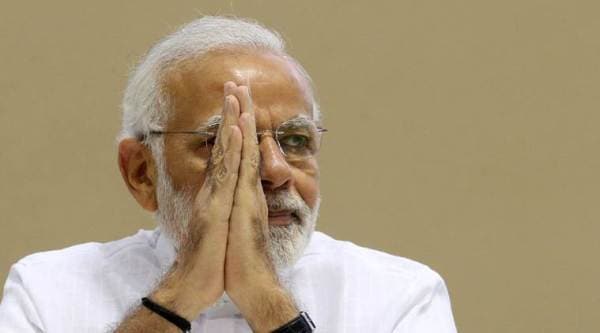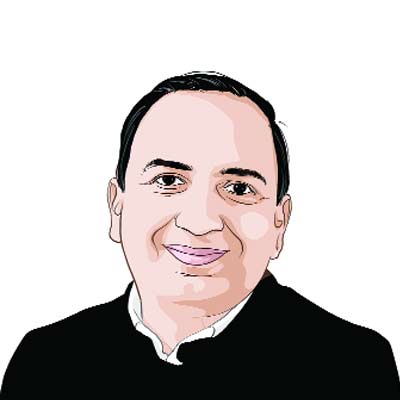State and Capital
Modi government has added an insidious dimension to the nexus. It is hidden in plain sight

The government led by Prime Minister Narendra Modi has added an insidious dimension to state-capital relations. (Express Photo/Amit Mehra/File)
The relationship between state and capital is an important capillary of power in a modern democracy. This relationship is governed by many contradictory impulses. In a democracy, politicians need capital for elections and for sustaining politics as a career choice. But politics also has to be responsive to the demands of social legitimation. There is a second issue. There is often a tension between seeking policies that favour particular businesses and policies that favour a level playing field based on principles that produce growth. The third tension is between the imperatives of looking business friendly on the one hand, and incorporating genuine public goods into regulation on the other — like environment and human rights. These tensions are perennial in any democracy.
The UPA mismanaged these tensions. Corruption had reached a point where the demands of social legitimation had become nearly impossible; the state became an outright plutocracy. This spawned not just an anti-corruption movement that delegitimised Congress at the time. It led to a whole series of hit and miss judicial interventions. The inability to meet the demands of legitimation produced a policy paralysis of sorts. The second tension was manifest largely in the way the government doled out credit. The exercise of discretionary power in this area brought the banking system to its knees. It produced a protracted crisis that continues: Private investment is still tepid. And third, on labour and environment, the government doled out symbolic protections but, by and large, capital had the upper hand.
The BJP, therefore, had the task of re-managing these tensions. The jury is still out on whether India is less plutocratic than before. But the BJP has sought to manage the tensions by three devices. The first lesson they learnt from the Congress debacle was this. During Congress rule, individual Congressmen were benefitting from using state power, but the party was losing. This was double jeopardy for the Congress. On the one hand, it meant lots of Congress leaders were exercising their individual channels of influence without the benefit accruing to the party. The result was that individual Congressmen were rich but the party was poor. This still haunts the Congress. On the other hand, the system created a free-for-all which magnified perceptions of corruption. The BJP has the advantage that its state-capital dealings are more centralised, so the more benefits accrue to the party and its centralised leadership, it also has the advantage of reducing the appearance of transactional corruption since, if the party has an efficient resource mobilisation strategy, it can often afford to rein in on more transactional corruption by individual leaders. The second device was to create new instruments like electoral bonds that are opaque to the public but provide a new channel of financing. Third, it tried to occupy the space of anti-plutocratic politics with decidedly mixed results. Demonetisation was one element of this gambit. There has also been a slew of measures that empower governments to go after economic offenders (attaching properties, making bribe-giving as much an offence as receiving it). But the results are yet to accrue.
Whenever individual businesses extract too much from the state, there is a logjam. Arguably, the 1991 liberalisation was a result of the pro-business policies of the previous decade reaching a dead-end. So liberalisation was a needed shake-out of existing players. For the sake of growth, the need was to create new players or have old players play a different game. The recent investment crisis, produced in part by the mess in the banking sector, arguably needed exactly such a shake-up. The promising Bankruptcy and Insolvency Bill, new regulators in real estate markets, are potentially an instrument of such a shake-out — getting rid of some crony firms and allowing for reallocation of capital. But this process has a long way to go before its credibility is established. Meanwhile, just like the shake-up of 1991 initially led to a slowdown, the process of cleaning up banks will also dampen private investment. This shake-up is meaningful but, like the 1991 process, not in principle incompatible with centralised corruption.
With private investment tepid, the Modi government decided to go for signalling. It created a new obsession with analytically dubious indexes like the ease of doing business. To overcome the appearance of policy paralysis, it seems to show no urgency for creating sensible regulatory protections for public goods like the environment (except where it can be turned into a business proposition in its own right). This government is not unique. The tragedy in Tuticorin where companies can literally poison the earth and water, get away with it, and then demand protection from labour protest, is a stark reminder of just how much capital still rules the roost. But the biggest irony in India is that even after a long stretch of pro-business policies, where the state bent over backward to accommodate business, India today has to rely on public investment or foreign capital, not domestic private investment, to keep the economy on an even keel.
But the Modi government added an insidious dimension to state-capital relations. Indian capital usually does not take on the government of the day for prudential reasons. But now private capital has been enlisted in a project of unprecedented alignment with the ideological purposes of the state. It often has to mobilise its resources in alignment with state goals and policies. But most importantly, can you think of any liberal democracy where so much private capital has been enlisted in not just supporting government, but also its whole ideological agenda? The state-capital nexus is not so much a matter of secret deals, hidden money trails or transactional bargains. It is hidden in plain sight in the Indian media, where corporatisation and privatisation has not brought more variety or competition. Nor has it particularly brought intelligent thinking about markets. There are some exceptions. But a shockingly large section of the private media are now the ideological vanguard of the state, its rhetorical stormtroopers in a politics of communalism, polarisation, distraction, anti-intellectualism, mendacity and hate. This — the enlistment of private capital in an attempt to totally capture public discourse — is a new dimension of state-capital relations that a future historian will have to unpack.
The recalibration of state-capital relations to the point where they can simultaneously meet the demands of growth, legitimation and rents, has not happened. There may or may not be anything wrong in the Rafale deal. But it is a short-hand for saying state-capital issues are about to generate political heat once more.
The author is vice-chancellor, Ashoka University. Views are personal
For all the latest Opinion News, download Indian Express App
More From Pratap Bhanu Mehta
- Mandela’s forgivenessIt seems alien in a world where resentment is not seen as imprisoning, freedom is freedom to hate...
- Common minimum resolveThe opposition needs to reopen a political debate on institutions, sign on to a charter for institutional reform..
- Blame it on the liberalsLiberal-bashing is fun: You can say that they are not liberal enough and target them for being liberal too ..







































No hay comentarios:
Publicar un comentario